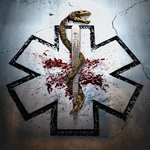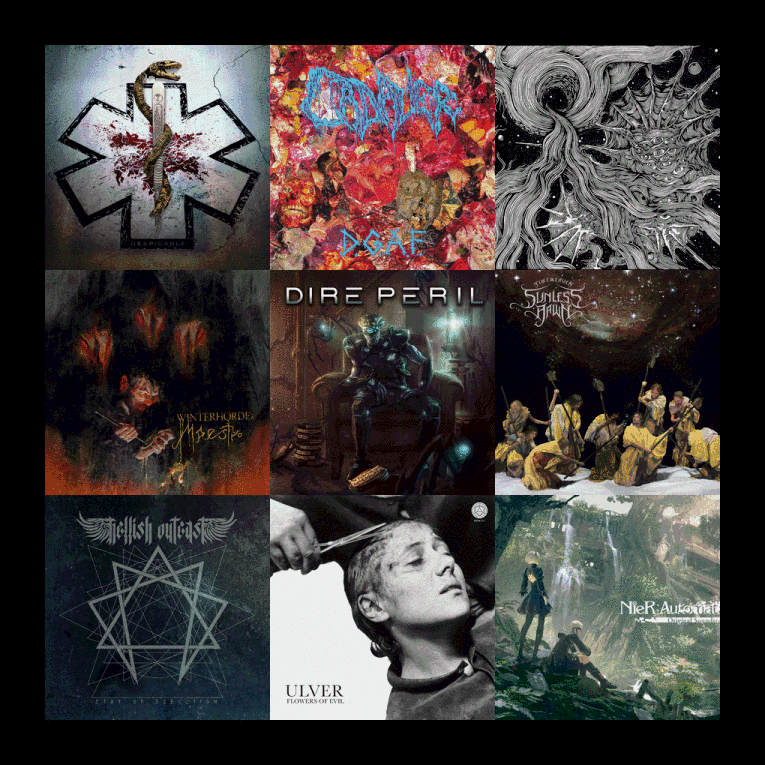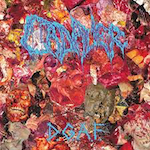Top EPs/non-metal of 2020 (plus albums not released in 2020)
Well, I didn’t manage to write up a proper end-of-year list by the end of the year, so as a (hopeful) stop-gap here’s something about the EPs, non-metal music and albums that I picked up in 2020 that weren’t actually released that year. At some point I hope to finish my write up for 2020 albums rather than continuing to languish in the same draft purgatory where my write ups for 2016 to 2019 are languishing but I’d rather not make any promises that I cannot keep. Fingers crossed at any rate.
You may note that I’ve not included embedded YouTube or Bandcamp players this time around, because it turns out that having 15+ embedded players makes pages load incredibly slowly (something that I should have realised as a vaguely IT-literate person). If there’s anything that takes your fancy then just click the album/EP title to load up the appropriate player – Bandcamp links should be fine but the YouTube links are not always from official channels so may be taken down at any time.
EPs

3. Carcass // Despicable
Though Carcass decided to postpone the release of their seventh album, Torn Arteries, as a result of Covid-19, the release of the Despicable EP was brought forward to soften the blow. Well, it might have done had Jeff Walker not openly admitted that the EP’s songs weren’t considered good enough for inclusion on Torn Arteries, and memories of the Surgical Steel bonus tracks not being all that either. Despicable‘s four songs continue the highly polished and very melodic death of Surgical Steel and are decent enough, but nowhere near the brilliance that I expect from Carcass. Here’s hoping Torn Arteries is more impressive.
2. Cadaver // D.G.A.F.
Back from the dead 16 years after the release of Necrosis in 2004, Cadaver’s latest incarnation managed to put out two releases in 2020, this EP and full-length album Edder & Bile. Consisting of founding member and primary songwriter Anders Odden (vocals/guitars/bass) along with Dirk Verbeuren (drums), D.G.A.F has the same kind of simple tremolo and power chord riffs of Necrosis but the three songs are mostly mid-paced and a bit, well, pedestrian. Verbeuren’s tight drumming doesn’t really help, as it lacks the speed, intensity and the nearly out of control feeling provided by Czral’s absolutely insane blasting on Necrosis, plus he’s too damn high in the mix. I’ll still check out Edder & Bile, but my expectations are not high.

1. Daughter Chaos // Daughter Chaos
Spun off from the ashes of Christopher Amott’s side project Armageddon, Daughter Chaos is full of that down-tuned melodic death metal that Arch Enemy nailed on their first album before slowly paring down that formula to lowest common denominator anthemic bullshit and choking the life out of it. Which means five songs packed full of riffs, harmonised lead guitars and the neoclassical shredding that Amott used to great effect with both Arch Enemy and Armageddon. Whilst doing nothing groundbreaking, given that the two previous EPs ranged from meh to average, this EP was by far and away my favourite of the year.
Albums Not Released in 2020:

4. Winterhorde // Maestro (2016)
AMG gave this album a pretty enthusiastic write-up upon its release four years ago, and I think that I put it in my Bandcamp wishlist before promptly forgetting about it. However, the album survived my periodic wishlist purges to the point where I finally gave it a proper listen and unsurprisingly it turned out to be really good. A modern take on symphonic black metal that maintains the brutality that Dimmu Borgir seem to have forgotten about, avoids the cheesiness of Cradle of Filth (though I note that the last two CoF albums are pretty good) and injects a good dose of variety to the proceedings to maintain interest throughout. At 65 minutes, it is a little on the long side, but the songs are dynamic enough that I don’t get bored of listening to the album from start to finish. Highly recommended!

3. Dire Peril // The Extraterrestrial Compendium (2018)
At the risk of taking the easy way out on the description front, Dire Peril is basically a SF version of Demons & Wizards, except good. Consisting of guitarist Jason Ashcroft (Hellion Prime) and vocalist John Yelland (Judicator), Dire Peril belt out 14 tracks based on Jon Schaeffer’s patented power/thrash riffs, perfected during Iced Earth’s prime when the mere thought of playing along would give the average guitarist phantom pain in their picking wrist (and more so considering Jon Schaeffer plays with 13-56 gauge strings, which at Eb tuning is frankly bonkers but I’m going off-track now), backed by Yelland’s soaring vocals with shred-tastic solos mostly contributed by Taylor Washington of Paladin plus guests. Each track’s lyrics are inspired by a classic SF movies, ranging from The Thing and Starship Troopers to, uh, Riddick (I’d have allowed Pitch Black but the others? Lolwut) and I have to say that there isn’t a bad track on the album. My only criticism is that at 66 minutes, the album is on the long side as this style of metal can only do so much, but like I said, there is no real bad track on here and I’d find it challenging to find a track to cut. All said and done, a more concise 40-50 minute album with a EP of the remaining tracks would have made The Extraterrestrial Companion a stone cold power/thrash classic up there with the best of Iced Earth.

2. Sunless Dawn // Timeweaver (2018)
One oft-forgotten benefit of social media is having a stream of recently consumed/purchased media from like-minded people to peruse, such as Bandcamp’s music feed. This album cropped up a couple of months ago and looked interesting, so I gave it a listen and damn if it didn’t blow me away. Checking AMG as the source of objectively true opinions on metal, it turned out that the album had indeed been reviewed at the time of release but I had evidently filtered it out without even listening due to the embedded track due to the album getting a 3.5, which just goes to show that even average scoring albums should still be given a chance though I maintain that albums scoring below 3 are invariably shit. Timeweaver is Sunless Dawn’s debut album, a SF-themed progressive death metal affair that is impressive, despite its length (60 minutes) and the fact that it doesn’t really hold with simplistic song structures, to the point where it can be difficult to get a grasp on each individual song. I’m still having trouble, despite listening to the album countless time over the past few months, but the investment of time will be rewarded. Third track “The Arbiter” is a notable stand out for its grinding inverted power chord main riff and lead guitar infused chorus, before closing with an extended and far more chilled outro. The synth backing at various points reminds me a lot of the British one-man instrumental djent band Chimp Spanner at times, which is most likely a reference that no one will get but such is life. More vocal variety would have gone some way to making this album better, but otherwise there is very little to fault and I have no doubt that the band’s next album will be outstanding.

1. Hellish Outcast // Stay of Execution (2015)
Much like the Chronus album, Stay of Execution was another album picked up via a random browse of the Listenable Records Bandcamp page that has had remarable staying power. In fact, I’ve probably listened to it more than any other album that I’ve picked up this year and would have been the clear winner had it been released in 2020 (2015 would have been another story however, as my top five albums that year were exceptional). Of the band’s members, I’ve only heard of the vocalist Thebon (ex-Keep of Kalessin) so there’s some pedigree there along with an assurance of different vocal styles (namely guttural, snarled and sung), but I was still surprised at how assured and varied the album was for a second effort. Playing a relatively straight forward form of groove-laden death metal, full of chunky power chords and low-end tremolo riffs that wouldn’t be out of place on any other modern Norwegian death metal album, the first curveball comes in the chorus of second song “I Can No Longer See the Sun” which has double-tracked clean and snarled vocals (a technique that crops up in later songs as well), before the extended outro of third song “Heresiarch” that features a slow-paced lead guitar line over acoustic guitars and harmonised choral style chants before the main vocals come in. Things settle down a bit until fifth song “Leave” begins with a slow strummed and arpeggiated guitar riff and an effect-laden vocal line that sounds like the backing vocals in Pantera’s “Floods”, before a female vocal line take the lead in the middle of the song. It’s a beautifully atmospheric song, albeit not very death metal, and does comes as somewhat of a jarring change of pace sandwiched between more obviously brutal songs. The variety of songs may feel unbalanced to some, but I had no issues with it. “Leave” hits me in the feels hard and Thebon’s double-tracked clean/snarled vocals are incredibly effective, so I’m hoping that the band is still together and working on a follow-up.
Non-metal

2. Ulver // Flowers of Evil
To be honest, I haven’t listened to much non-metal this year at all so it feels like I’m writing about this album out of obligation than a real sense of it being a worthy inclusion. Although it’s doing nothing vastly different from the dark synthpop of The Assassination of Julius Caesar, Flowers of Evil doesn’t have the staying power of that previous album which I’ve spun regularly since its release in 2017. Still, average Ulver is often superior to the best releases of other bands, and should still be checked out if you enjoyed the last release.
1. NiEr:Automata OST (2017)
Having spent a significant number of hours (63+ according to TrueAchievements) playing through the superb NiEr:Automata in 2020, the OST had a long time to sink into my consciousness. A mix of orchestral and ambient pieces, with ethereal vocals by English/Japanese singer Emi Evans who notably wrote her lyrics using different languages as a base and then invented similar sounding words to use, even going so far as to invent an entirely new language for track “Song of the Ancients”. Two other singers, J’Nique Nicole and Nami Nakagawa, also contributed vocals on their own songs, as well for alternative versions of key songs within the OST (you’ll have to play the game to understand why alternate versions exist :P). As other reviewers have noted, it’s difficult to talk about the OST without reference to the emotional beats of the game, and as such the OST will have less impact for those who haven’t played the game. Nevertheless, even considered as an entirely entity, the OST is one of the best game soundtracks that I have heard, and I recommend it wholeheartedly.


